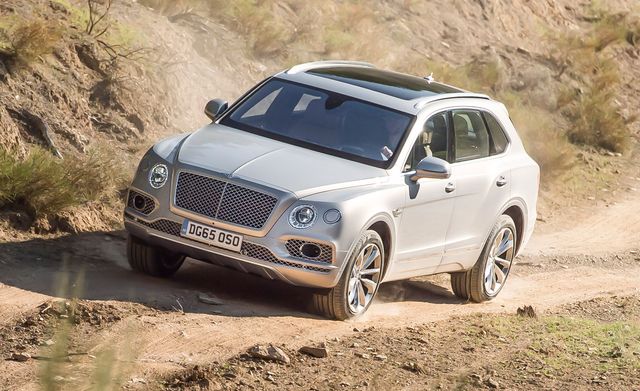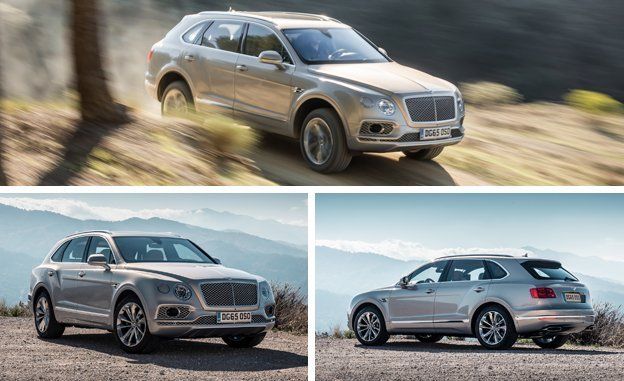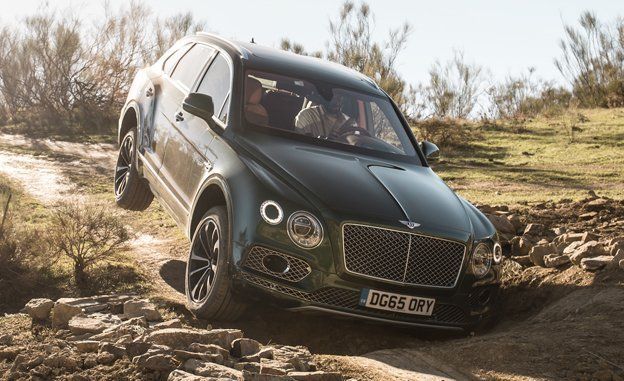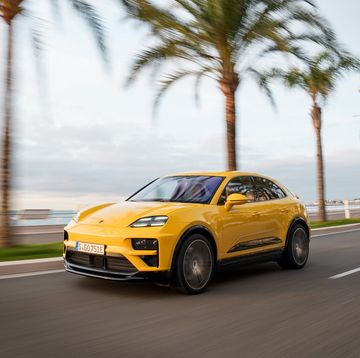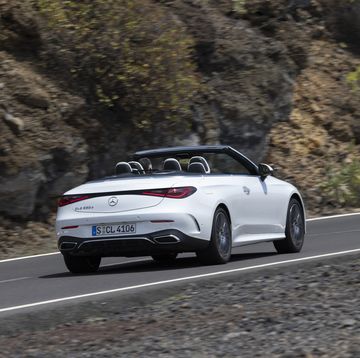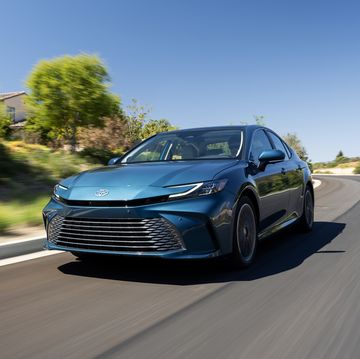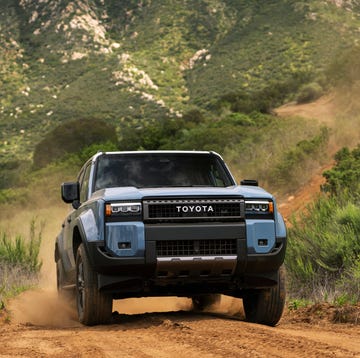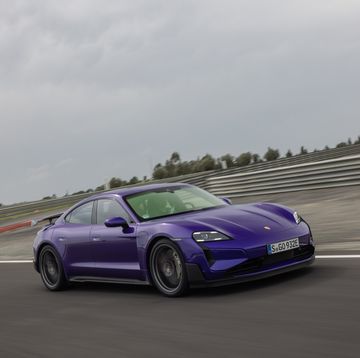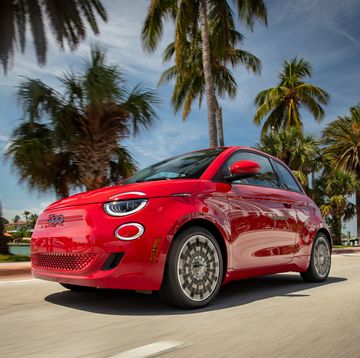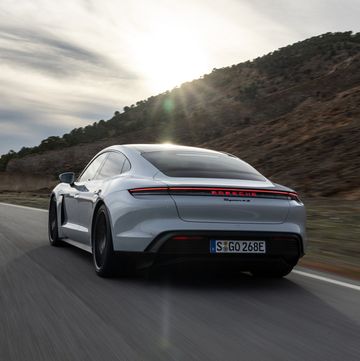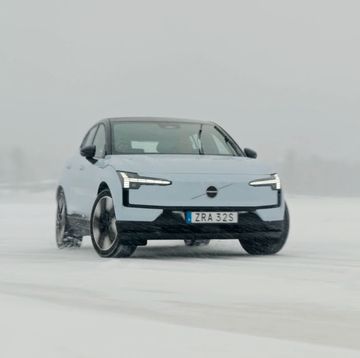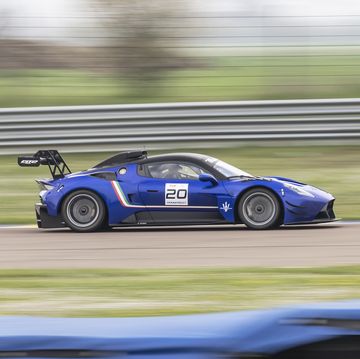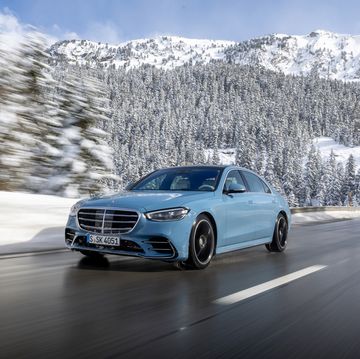Legend has it that Ettore Bugatti once called the Bentley 4½ Litre the “world’s fastest truck.” We’re guessing that he didn’t know he was merely being prophetic. Because now Bentley builds an SUV, and guess what? Its 187-mph top speed is the highest on record for a vehicle of that type.
Why an SUV? Simple: People who drive Bentleys tend to have other vehicles (a lot of them), and the vehicle they drive in the winter—or when it’s raining, or foggy, or below 75 degrees—tends to be an SUV. Now that Bentley makes an SUV, a lot of those buyers will make that SUV a Bentley, as well.
For the last three years, Bentley has sold more than 10,000 vehicles annually, a major milestone for the company. The Bentayga is going to help obliterate that record: The company plans to build 5500 Bentaygas in 2016. That estimate already has been revised upward once, and company executives tell us that, as interest builds, that figure may enjoy yet another upward correction.
And while the Bentayga might be tall for a Bentley at 68.6 inches, it’s not otherwise particularly large for one. At 202.4 inches long and 78.7 inches wide, it’s about 17 inches shorter than a Mulsanne and three inches wider. At nearly 5400 pounds, it’s about 550 pounds lighter than the Mulsanne and just shy of a Flying Spur W-12. The floorpan is steel, but most of the rest of the sheetmetal is aluminum, including all exterior panels. Bentley says that the body side is the auto industry’s largest single aluminum stamping.
With its (relatively) low mass for a Bentley, the Bentayga is kind of spectacular to drive. The damping of the multilink front and rear suspensions is exemplary. Even over the extreme speed bumps peppered throughout the hamlets of southern Spain, the most massive of wheel displacements are forgotten in a single, gentle compression and rebound of the suspension. The electric power steering is weighty and direct, although it doesn’t enjoy a ton of feel. But by SUV standards, it’s excellent. As are the brakes. The pedal is firm and progressive, and even barreling down the twisting switchbacks of the Sierra Blanca mountains, there was never a hint of fade.
Handling is neutral enough that you’ll forget this is a 5400-pound SUV with a 12-cylinder engine in the nose. Sure, you can force it into understeer, but you can also set it up to flow through turns better than a vehicle this size has any right to, mostly because it corners remarkably flat. Its outstanding body control is the result of Bentley Dynamic Ride, a new active anti-roll bar that counteracts natural roll with a pair of electric actuators, one at each end of the vehicle to stiffen and soften the front and rear bars. It’s a trick system, but don’t expect the sports-car world to rush to adopt it. In order for the system to act quickly enough, says product-line director Peter Guest, it needs to operate on 48 volts, with a supercapacitor meting the voltage. With the bars, the actuators, the supercapacitor, and the heavy-duty cables—which he says are about four times the diameter of most automotive cables—the system weighs between 30 and 40 pounds. Bentley chief executive Wolfgang Dürheimer says Bentley Dynamic Ride is technically capable of leaning the Bentayga into a turn, motorcycle-style, but, in the interest of passenger comfort, the company stopped short of allowing that capability. We’d be quite interested to see what sort of impact that would have on cornering. The system allows a firm, controlled—but never harsh—ride on pavement but allows maximum wheel articulation off.
Ready to Crawl
That’s right: off road. Because this is a Bentley meant for dirt, our drive included some semi-serious off-roading. At first we feared that the trail was going to be too easy, something a rental Toyota Camry could conquer, but we got into some pretty tricky attitudes—the oiling system is designed to keep the engine lubricated at up to 35 degrees of tilt in any direction. We crawled through a few ditches that had the Bentayga alternately kissing the ground—a few trucks in our group actually did scuff their chins, an occurrence that is probably about 10 times more expensive than your entire beater Jeep—and hanging a rear wheel off the ground at full suspension droop.
There are, of course, additional vehicle settings for off-roading: snow and grass, dirt and gravel, mud and trail, and sand dunes. There are two suspension settings that raise ground clearance a little or a little more (Bentley declined to provide specific figures). Hill-descent control holds your speed on downslopes, and there’s an infotainment-system screen that monitors each of these settings as well as wheel articulation and incline/decline and side-slope angles. Also, the front parking camera is well suited to peeking over sharp crests for a better view of what’s out of sight below the Bentayga’s domed hood. Some of these features distract from the simple joy of driving through nature—as does the pulsing of the brakes mimicking limited-slip differentials—but you don’t have to use them. They turn off automatically above 47 mph in case you accidentally drive onto pavement with them still engaged. At the end of the trail, Bentley had positioned a car-washing crew, but we waved them off and finished our drive proudly wearing a fine dusting of ruddy dirt over our Bentayga’s immaculate Verdant Green paint.
Specifications

Jared Gall started his career with Car and Driver as an unpaid intern, but has now worked here more than half of his life. He has held numerous positions within C/D's digital and print teams and has driven some 2500 cars. Employee records indicate that he is the only staffer ever to T-bone a school bus with another school bus.
